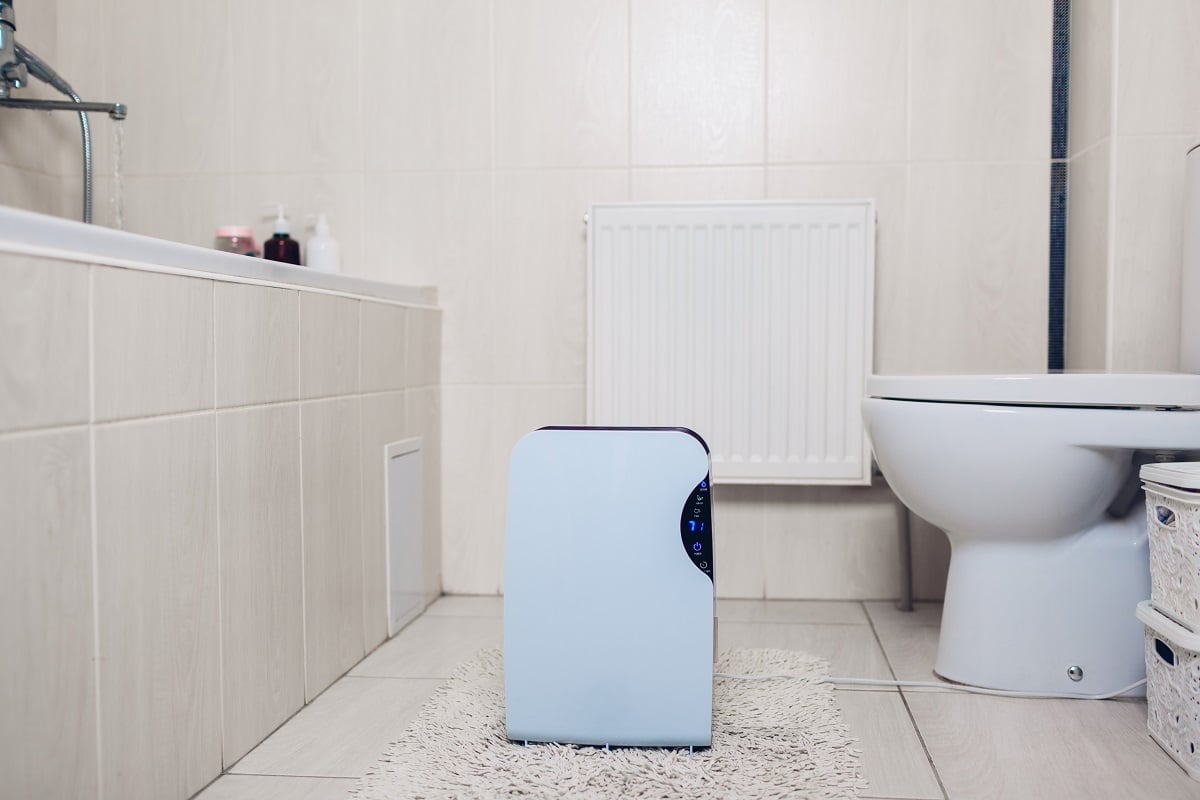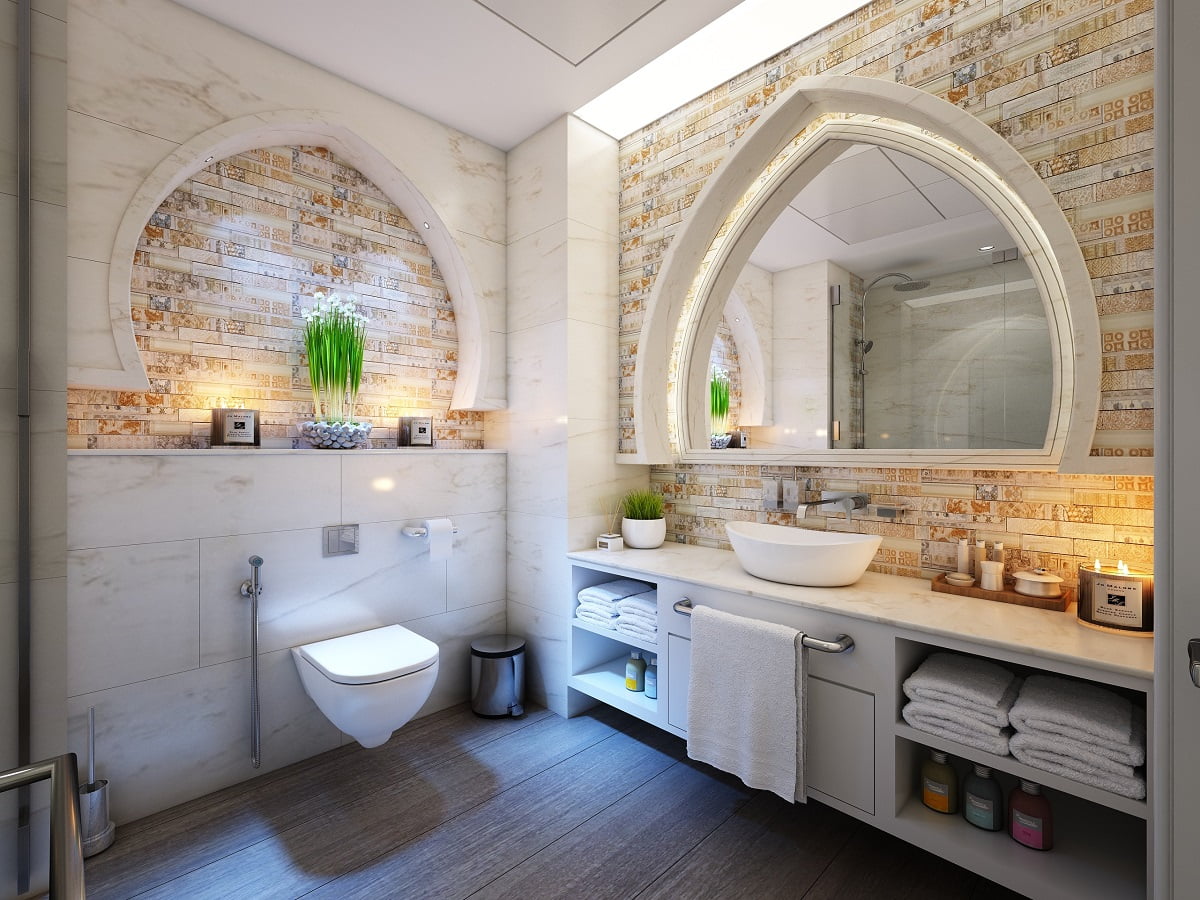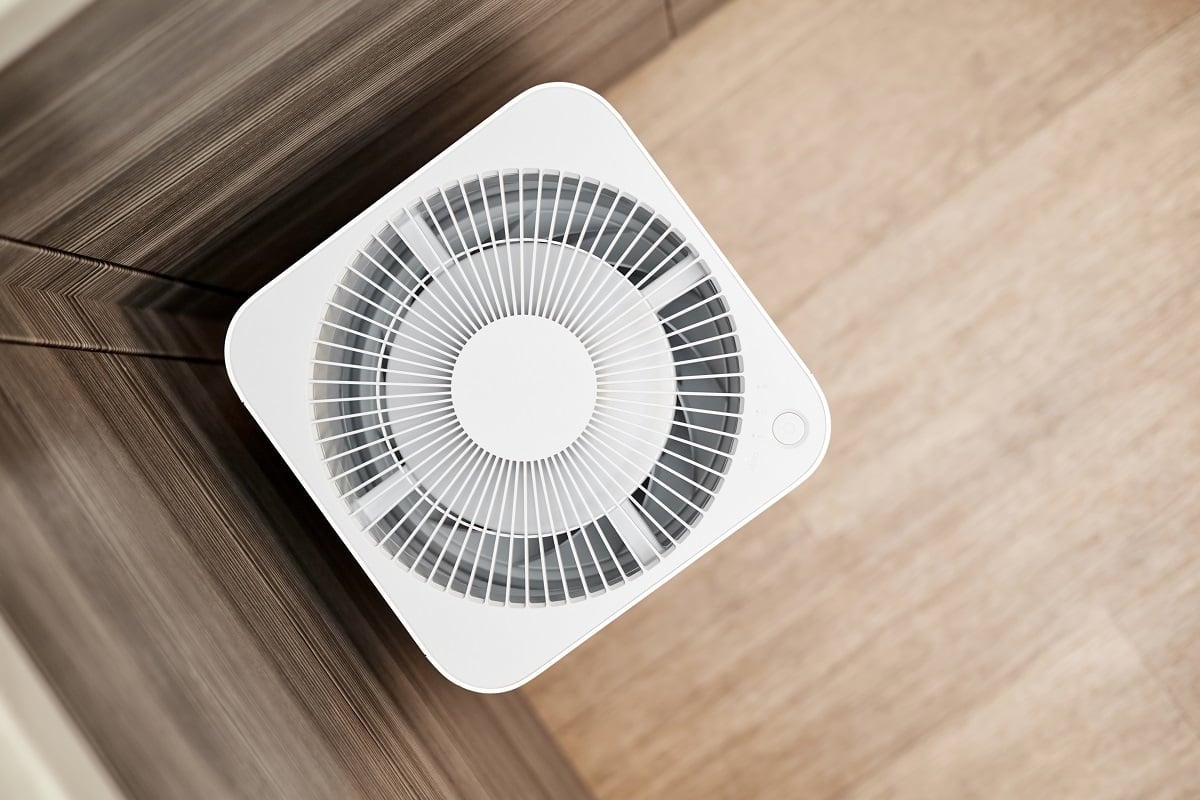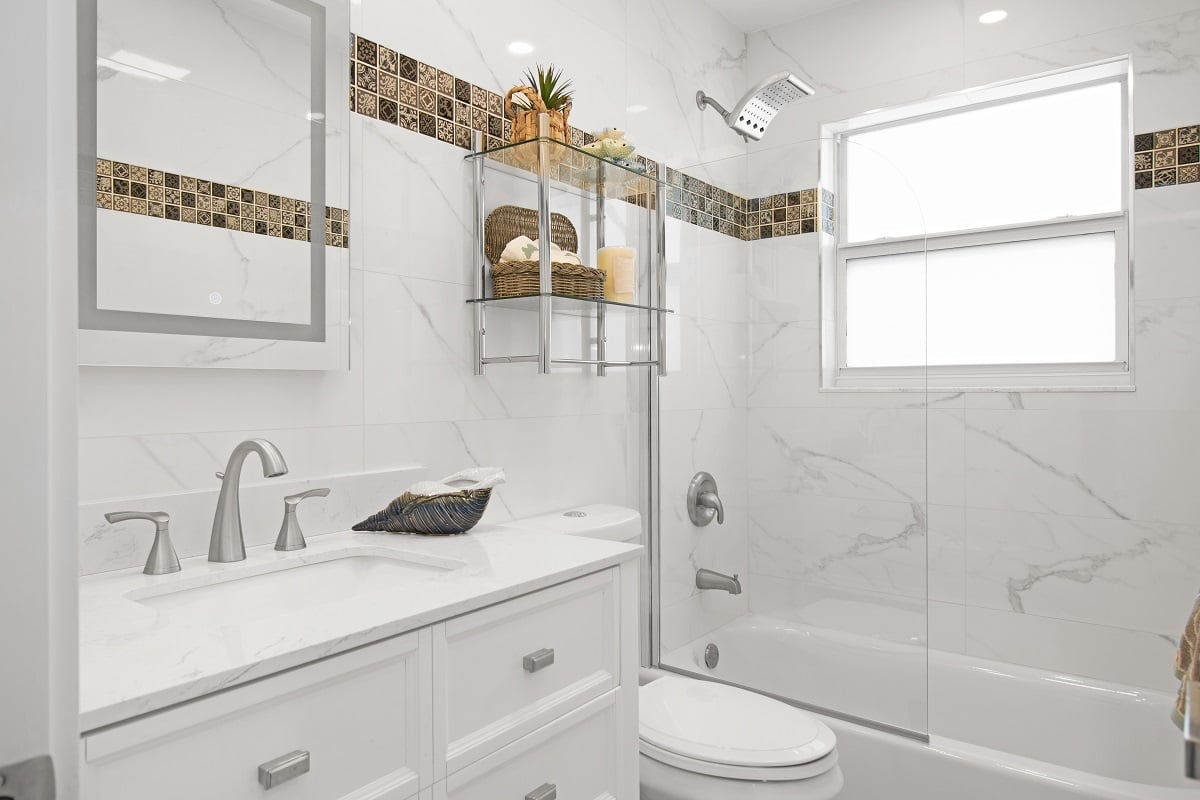The need for a dehumidifier for the bathroom becomes apparent with all the steamy hot showers you take, leaving tiles and other surfaces untidy.
![Can You Use A Dehumidifier In The Bathroom [All You Need To Know] Can You Use A Dehumidifier In The Bathroom](https://homesthetics.net/wp-content/uploads/2022/09/Can-You-Use-A-Dehumidifier-In-The-Bathroom-1.jpg)
The moist environment of a bathroom can make use of a dehumidifier that can clean the excess moisture from the air and make it pleasant to breathe. And the cherry on top? It will also dry out the bathroom, which is excellent for someone in line to enjoy a relaxing bath after you.
There are a lot of perks of using a dehumidifier in the bathroom, and we have tried covering all of them today. So, leave all your clammy worries aside and see what a bathroom dehumidifier can do.
Can You Use A Dehumidifier In The Bathroom?

Installing a dehumidifier in a house seems like a plan to many, even though some might not actually require one. The main purpose behind installing a dehumidifier is to remove the excess moisture in the air as opposed to humidifiers, and people who live in moist climates can’t go a day without one.
But why does it sound so odd when a person says, “Oh! I left my bathroom dehumidifier on?”
Is it so weird to install dehumidifiers in the bathroom? Well, it isn’t so. You can and, in fact, should install a bathroom dehumidifier, and there are plenty of reasons behind that. You use the bathroom multiple times a day, be it for washing hands or taking a nice hot relaxing bath.
That’s why the air in the space needs to be clean and easy enough to breathe for your sake. Not only the bathroom but other spaces like a laundry room or the crawl space also need a dehumidifier to maintain breathable air.
A dehumidifier can provide a breathing space for people with asthma or allergies, as moist air can trigger some alarming issues making their condition worse. Dust mites thrive in areas with a relative humidity level of 65% or over. They can do a full family planning if the levels stay that way which can cause sneezing, wheezing, and worse, trigger existing allergies.
Therefore, dehumidifying the bathroom to safe humidity levels of 30-50% is ideal and should always be maintained to ensure your bathroom’s air is breathable and doesn’t cause issues.
Common Reasons To Install Bathroom Dehumidifiers
The hot air in the bathroom after a hot shower increases the humidity, and it grows further if you put wet clothes or dry your laundry in the same. The problem escalates if the bathroom is all but a tiny space with no windows whatsoever. This makes it hard for air to circulate, which deteriorates the air quality causing health concerns like breathing problems.
This excess moisture in the air needs to be cleared out regularly, and that’s what a bathroom dehumidifier does. It works as an air purifier and as an air filter which rips the air off its excess moisture, which can bring a dynamo effect of problems if left untreated.
If you don’t know what these problems are or why a dehumidifier is the only option for some homeowners or renters, then take a look below.
1. Low Ventilation With No Windows
Most people might be wondering, “Why a dehumidifier when windows could just do the job?” Well, that’s because some bathrooms aren’t lucky enough to have a window which reduces ventilation and air stays stuck in one place without moving around. For people with such bathrooms, there’s no other option besides a bathroom dehumidifier which will clean damp air and maintain its breathability.
Besides, even if you have windows in the bathroom, will you be willing to open them in the chilling winters? Sounds blasphemous, right? That’s why dehumidifiers stay the only option with bathrooms having low ventilation. Now, if you’re worried that a humidifier will hoard a large chunk of space in your bathroom, then fret not.
Portable dehumidifiers work like a charm for people with tiny bath spaces, and they do an excellent job of moisture removal and are on par with an exhaust fan.
On that note, if you’re wondering, “how big of a dehumidifier do I need for my bathroom?” then know that it all depends on the size of the bathroom. Other than that, it also depends on the level of humidity it experiences, and on that basis, you can get a unit that will successfully solve the problem.
2. No Bathroom Extractor Fan
Many people get baffled when they realize that there are some bathroom units with no bathroom fan to clean out all the steam after a hot shower, and they should be. That’s because exhaust fans are great for removing moisture from the air, and bathrooms with low ventilation especially need them. They vent out warm, moist air and help in air circulation, maintaining its quality.
And units with no exhaust fan face issues with moist air more often than one with one. So, if yours doesn’t have a bathroom fan and you’re a renter at that, then getting a bathroom dehumidifier is an ideal solution. As exhaust fan installation may cause some damage, a portable dehumidifier without any necessary pleading or requests to the owner is great.
Now, as we’re discussing air vents and their importance, there’s an ongoing debate regarding dehumidifiers vs bathroom vents and what people should go for. The answer is quite simple for that; it all depends on the persistence of moisture in your bathroom. If it’s occasional, then a bathroom extractor fan is enough, and if the moisture is persistent, then a dehumidifier is great.
3. Condensation On Bathroom Tiles, Mirror, And Other Surfaces
People often complain about crying or sweating bathroom walls, especially during winters when steam from hot showers condenses. This happens when hot air comes in contact with a cold surface and ends up condensing on the walls or other surfaces to cover it with water droplets.
This is quite problematic as increased exposure to such condensed water particles on surfaces like mirrors or wallpapers can end up destroying it. Additionally, these water droplets not only reduce the aesthetic and décor of the bathroom but also lead to mold growth, especially black mold, which is harmful. To counter this issue of condensation, bathroom dehumidifiers are necessary, especially if the bathroom has poor ventilation.
4. Mold And Mildew
Another growing concern among renters with excess moisture in the air is the growth of mold and mildew in bathrooms. An area with moist air and low ventilation is heaven for unpleasant mold and mildew, which thrive in such an environment. And sadly, our bathrooms happen to be such havens for them.
They grow in cracks that experience frequent moisture, like around bathtubs, showerheads, and caulking, and taint the ambiance of the whole place. This growth can end up destroying essential appliances in the bathroom and lead to other health concerns. Thus, bathroom dehumidifiers become important to counteract their growth and protect the safe environment of your bathroom.
5. Respiratory Issues
Excess air moisture is a curse for people who suffer from respiratory issues like asthma, bronchitis, or other allergies as it can trigger the symptoms causing them. Under extreme circumstances, it can also lead to issues in breathability and deteriorate the overall air quality as organisms thrive in warm moisture-ridden air.
Therefore, dehumidifying air from time to time is vital to maintain proper air quality and avoid issues that can cause your underlying health problems to relapse. Besides, if you have elders at home, then a bathroom dehumidifier is extremely important to ensure your bathroom air remains clear.
6. Musty Odor
Lastly, the musty odor that moist air carries is highly unpleasant, and you might end up spraying lots of freshener to tackle this issue which usually only worsens the situation. Likewise, moist air feels sticky on the skin, and you might want to take baths again and again to feel refreshed, which is quite troublesome.
This is why dehumidifiers are necessary, not only in bathrooms but also in the house, especially in places that experience lots of humidity. Furthermore, the thing about moist air is that it takes a turn for the worse in rainy seasons, which only adds up to the headache.
Therefore, installing a dehumidifier is a wise choice as you can plug it in, set a dehumidification setting to an optimal level, and just forget all your damp worries. They make cleaning moist air efficient, inexpensive, and less cumbersome.
Things To Consider While Installing A Dehumidifier In The Bathroom

Once you have identified the need for a dehumidifier in a small bathroom with poor ventilation, next comes educating yourself a bit about dehumidifiers and their types. Some people blindly opt for dehumidifiers without knowing a thing about their functioning, which poses problems later on.
That’s why we’ve created a brief buyer’s guide on bathroom dehumidifiers and what you should consider before buying the same.
1. Drawbacks Associated With Dehumidifiers
Dehumidifiers are great for reducing humidity, preventing mold, and maintaining the quality of air in poorly ventilated units. However, they have their fair share of drawbacks too, which makes people think twice before incorporating them into their HVAC system. If you don’t know what these are, then find more on them below.
A. Expensive
One of the significant drawbacks of dehumidifiers, as opposed to exhaust fans, is that they are expensive, and the more advanced one you go for, the extra it will cost. Though they are an excellent one-time investment, some people don’t feel the need to spend over $200 when an inexpensive option in the form of an exhaust fan exists.
Still, you should know that though they are expensive, they are extremely easy to set up and require minimal installation. In that sense, their installations are cheap, unlike ceiling exhaust fans, which need rewiring, breaking, and prior permission from the owner if you’re renting.
B. Take Up A Lot Of Space
People with small bathrooms don’t like the thought of their valuable bathroom space being hoarded by a dehumidifier which is quite troublesome. If you’re planning to install a bathroom dehumidifier permanently with a hose for emptying the sucked-up moisture, then extra space to accommodate the unit is crucial.
Though a small dehumidifier doesn’t take up too much space, it won’t work efficiently either if your bathroom is large and faces persistent humidity issues. Hence, if you’re planning to install a dehumidifier, then it’s better to prepare your heart for the valuable space that will be taken up by the unit.
C. Regular Maintenance
We all know that a bathroom exhaust fan needs to be cleaned and regularly maintained for proper functioning, and in the same manner, a dehumidifier needs proper maintenance too. In fact, if you’ve opted for a tank dehumidifier that stores moisture inside the tank, then this tank needs to be drained manually and cleaned, if not daily.
But this issue can be countered if you don’t want to manually drain water from the dehumidifier by opting for a high-efficiency dehumidifier with a drain hose. A tankless, tamper-proof dehumidifier with a continuous drain option is great for hands-off humidity control featuring a control panel for better control, and you should definitely go for it.
D. Noise
Many people are of the idea that dehumidifiers don’t make noise, unlike exhaust fans which can be quite loud while performing their regular job. However, they don’t know that dehumidifiers are noisy too, and in units with loud compressors, the problem becomes worse. That’s because dehumidifiers work like refrigerators and make somewhat the same kind of noise.
You can hear the noise of the compressor, dripping water, and the condenser fan while the dehumidifier is working. But don’t worry, as this can be easily tackled if you choose the right dehumidifier.
People with a Tosot dehumidifier have no issues with noise as it’s very quiet even in the highest setting (52 decibels) and just 48 on the lowest. It carries a white noise which isn’t so problematic or irritating, so you can go for it too.
2. Electricity Cost
Most bathroom dehumidifiers work on electricity and need to be constantly plugged in if the moisture problem is persistent. This will shoot up the electricity cost inevitably and if you aren’t ready for that, then consider your options well.
Though dehumidifiers don't cost much in terms of electricity compared to other household appliances like refrigerators or ACs, they still run 24/7, which can add to your electricity bill. But this can be tackled as most dehumidifiers today are energy star certified. And if you go for high-efficiency dehumidifiers with high dehumidifying capacity, then it will be more energy efficient.
3. Kind Of Dehumidifier To Install
Another thing that you need to consider before buying a dehumidifier is the kind of dehumidifier that will work best according to your current circumstances or needs. Here, you need to pay close attention to the brand, dehumidifying capacity, type, and the right size of dehumidifier that best fits your bathroom.
There are many types and brands of dehumidifiers available on the market today, and each one of them vows to be the best. But that’s for you to decide after closer inspection into your needs. For example, if you face persistent humidity issues in the bathroom, then getting a dehumidifier with great dehumidifying capacity would be excellent.
It won’t only save energy but will remove moisture and ensure the air is dry enough. On that note, if you have a large bathroom, then getting a large dehumidifier with optimum capacity is ideal. While deciding on the size of the dehumidifier, you should closely inspect your bathroom size and then get one with the right capacity to store water after dehumidification.
If you’re planning to get a dehumidifier featuring a water tank, then choosing the right tank size and tank capacity to hold water is important. Though it’s suggested to get one with a continuous drain hose as it doesn’t require manual draining, which seems like a hassle to many.
Also, you should always get a dehumidifier with a washable filter which can be cleaned once every month for better performance and durability.

Can You Use A Dehumidifier In The Bathroom Frequently Asked Questions ?
Where should I install the dehumidifier in the bathroom?
As a dehumidifier is an electrical appliance, it’s better to install it in an area in the bathroom with less splashing. However, you should also place it somewhere close to the drain-source if your unit features a drainage hose.
Is it a good idea to install bathroom dehumidifiers?
Yes, installing a bathroom dehumidifier is the right decision, as bathrooms face high humidity and moisture after hot showers. They need to be dehumidified regularly to prevent the growth of mold and mildew and ensure air remains dry and fresh.
Which is better - the bathroom dehumidifier or the exhaust fan?
Bathroom dehumidifiers and exhaust fans have the same goal of dehumidification, and they both have their own perks and usage. In bathrooms that experience persistent moisture problems, bathroom dehumidifiers are good, whereas an exhaust fan is great for occasional problems with humidity.
Other than that, a ceiling exhaust fan has a complicated and costly installation compared to a dehumidifier. However, the latter tends to be an expensive purchase than the former. So, you should consider these factors before buying an exhaust fan or a bathroom dehumidifier. And go for the one that best suits your needs.
Does a dehumidifier work when windows are open?
Windows should be closed when the dehumidifier is on. Otherwise, it won’t be able to work efficiently.

Can You Use A Dehumidifier In The Bathroom Final Remarks
Bathroom dehumidifiers are great for preventing the problems caused by damp air, like the growth of mold, condensation, poor breathability, and others. They act as an air filter and improve the quality of air while also drying the clammy bathroom after you’re done showering.
So, don’t be shocked when you hear someone using a dehumidifier in the bathroom, as a room, basement, lobby, or laundry aren’t the only places that suffer from excess humidity. Try installing the same in your bathroom and see how all your underlying moisture problems wash away after using them.
